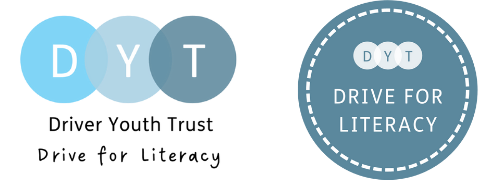
SENCo responsibilities: supporting transitions in secondary settings
30/4/2021
I have held the role of SENCo in three different secondary settings and have always been fascinated in the way that the role can differ depending on setting, cohort, and school culture. The status of the SENCo will impact the way in which they are able to execute the role. Some are senior leaders and others are not, and the school’s context will also influence SENCo responsibilities and focus.
The National Standards for SENCos identifies SENCo responsibilities as ‘providing professional guidance and high quality teaching for pupils with SEND’. But what does this actually look like for those working in a secondary setting? And how can SENCos support learners in the jump from Key Stage 2 to 3 and beyond?
SENCo responsibilities: the importance of context
SENCo are generalists, required to respond and adapt to a wide range of needs. They also develop specialisms driven by the school phase and specific needs of their cohort. As a SENCo in three settings, I became a specialist in ASD in one school, developed dyslexia expertise in another and in my current school have improved support for SEMH needs.
If we drill down further, SENCo responsibilities differ not just between primary and secondary but also between state and independent, mainstream, and special school settings and in different regions. Different cohorts require different support and the focus required for each stage is important for the SENCo to be effective. As any SENCo worth their salt knows, the ability to support learners to navigate these transitions effectively, is crucial.
Collaboration and shared accountability
Successful secondary SENCos cannot shoulder all this responsibility alone. They need to work collaboratively and distribute accountability across their school.
Ensuring effective transitions for SEND students is hugely important and can be supported on a whole school level. For example, in my current setting the lead teacher for year 7 transition joins the meetings with primary schools for year 6 students with SEND. This means they are fully informed when organising form groups and communicating information to Heads of Year and tutors. In turn, this allows my team to focus on the more targeted provision that the students will require.
Effective co-production with parents is also vital for supporting learners with SEND throughout their education. But unlike in primary settings where parents chat to teachers at drop off, secondary schools require systems and inclusive approaches.
How can SENCos do this effectively?
Firstly, ensure that parents are aware of how your school uses the graduated approach to review provision and support transitions. There are different ways to do this but an accessible SEN Information Report on your school website, and events to engage parents can go a long way to making parents feel informed and included. A parent’s coffee morning where you explain the graduated approach or different types of interventions and support can be very welcome.
Secondly, think about publishing dates in the school calendar to make planning and review processes in the graduated approach transparent. You can even include transition support processes here. For example, you might schedule careers support in Autumn Term 1, and then run all year 9 EHCP Annual Reviews in the half term prior to Options decisions.
To distribute the responsibility for effective support for SEND students across the school. Develop protocols for meetings which address the power imbalance that can exist between parents and professionals. For example, form tutors could work with parents and students to review and update student passports. To ensure effective co-production, train staff so that all teachers can have these conversations with confidence. For ideas on how to do this, check out my Chatterpack blog.
So, what can SENCos put in place to ensure smooth transitions through Key Stages?
- Distribute key people across the school to update pupil passports with families; for example, form tutors/classroom teachers can support this.
- Schedule regular meetings with pastoral/subject leaders to discuss students with SEND (include attendance, progress, transitions etc).
- Calendar key review points eg. EHCP and evidence for AA applications, so that classroom teachers know in advance.
- Ensure that student passports are updated and revisited by all teachers and build this focus into all quality assurance processes. Engage staff in the process by getting feedback and suggestions about the strategies that work for students in their classes.
Professional development with DYT
DYT is launching a new intensive CPD programme – Driving Inclusion: the Strategic SENCo. Designed around evidence-based practice, it aims to address the common challenges faced by SENCos in both primary and secondary settings. Participants will work their way through six modules expertly developed to enhance their leadership skills, SEND and inclusion knowledge and inspire them to create an action-plan for inclusion in their setting. Contact programmes@driveryouthtrust.com to find out more!
Liz Murray
Guest author
Liz has worked in education for 20 years. She is an English teacher and qualified SENCo who has held leadership roles in three schools, across primary and secondary phases. Liz currently combines a part time Assistant Head/ SENCo role with consultancy, supporting schools to improve their SEND provision and delivering teacher training

